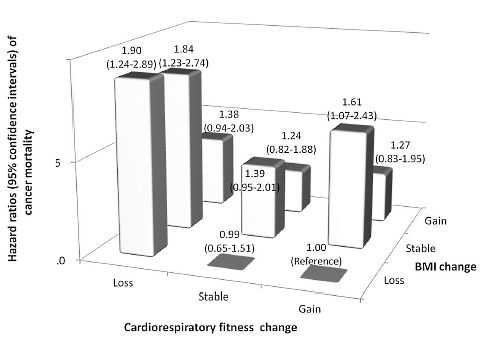|
Walking and running can halve the chance of brain cancer
Running and walking reduce the likelihood of your developing a brain tumour. Walking for 36-72 minutes every day or jogging for 15-30 minutes gives optimal protection. Bio-statistician Paul Williams at Ernest Orlando Lawrence Berkeley National Laboratory discovered this after following 150,000 runners and walkers for over ten years.

Study
Williams has devoted his work to the National Runners' and Walkers' Health Studies, a large-scale epidemiological project which contains data on 111,266 runners and 42,136 walkers, and continues to publish study after study. In previous years Williams has shown that running can reduce the chance of wear and tear on joints - at least if you are not overweight, and that runners put on weight if they start to run less.
In May 2014 Williams published the results of a study in Medicine & Science in Sports & Exercise, in which he examined the relationship between running, walking and brain cancer. Brain cancer is relatively rare, and scientists know little about the lifestyle factors that can protect against it.
Williams expressed the participants' physical activity in MET-hours per day. Scientists say that we need to get in 1.8 MET-hours a day. That's the equivalent of 36 minutes of walking or 15 minutes of jogging.
Results
The runners and walkers that managed to do 1.8 MET-hours a day or more were less likely to develop brain cancer than the participants who did less. The evidence was strongest for the over 50s.

Participants who walked for more than 72 minutes or jogged for longer than half an hour were not better protected than participants who did 36-72 minutes of walking or 15-30 minutes of jogging.
Mechanism
The most common form of brain cancer is glioma. In-vitro studies have shown that IGF-1 stimulates the growth of glioma cells. Williams believes that physical exercise helps the muscles to absorb more IGF-1 from the blood, making less IGF-1 available for cancer cell growth.
Conclusion
"Although our analyses cannot test whether exercise specifically improves survival in brain cancer patients, it is not unreasonable to expect that if physical activity decreases the risk of incident glioma, it might also extend survival ", Williams concludes.
Source:
Med Sci Sports Exerc. 2014 May;46(5):927-32.
More:
Prostate cancer grows half as fast in walkers 20.01.2013
Prostate cancer cells die in the blood of active people 07.06.2012
Bootcamp during chemo boosts your chances 19.05.2012
Archives:
Cancer Prevention & Survival
|






